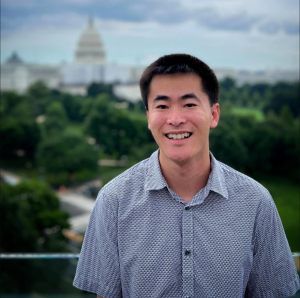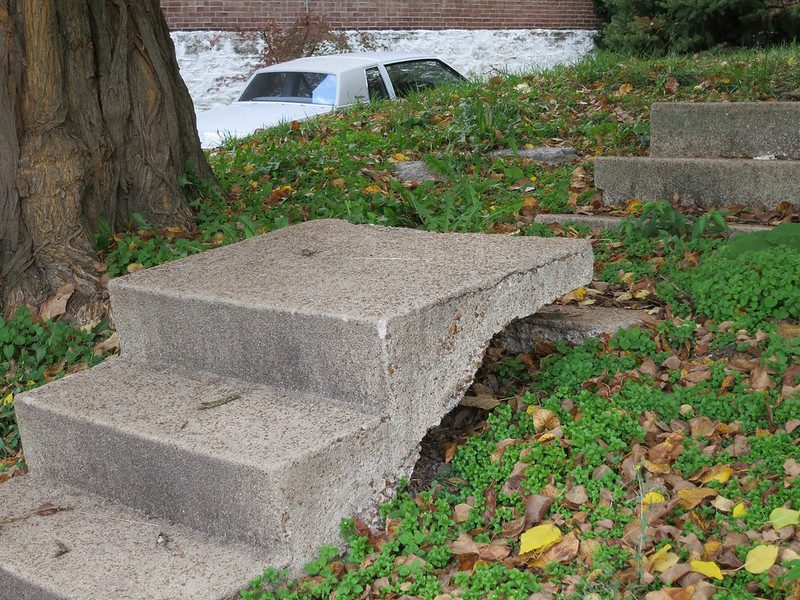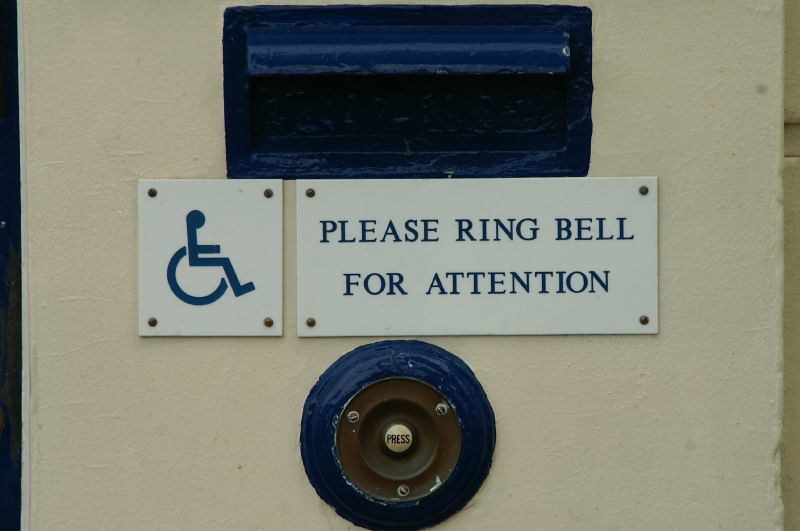This article is part of the Under the Lens series
Not Just Ramps—Disability and Housing Justice

Photo by Flickr user Michael Gabelmann, CC BY-NC 2.0
Justin Tsang’s mental health began to deteriorate soon after he moved out of his parents’ house and into a group home for adults with disabilities. It was 2016, Tsang was in his early 20s, and the group home’s rules felt restrictive and isolating. Tasks that Tsang had completed independently when he lived with his parents were suddenly off limits at the group home (called a “community care facility” in California where Tsang lives). He wasn’t allowed to cook for himself or manage his own medications. He had to follow a curfew and couldn’t have visitors. He suspected his roommate was stealing from him. Tsang says he was really “struggling with feeling independent.” Within the span of about a year, Tsang became so unhappy that he was admitted to a psychiatric hospital.
“I did advocate for my needs. I did complain to the state. But the first thing they did when they arrived at the home was talk to the administrative folks, who felt my complaints were unsubstantiated,” Tsang says. “And so I got really depressed.”
Tsang, who was born with encephalopathy due to preterm birth, was a college student at the time. Rather than focusing on his studies, Tsang found himself digging his way out of institutionalization (he has since graduated from the University of California, Berkeley). Once released from the psychiatric hospital, Tsang says, he was placed in another group home where he had even less autonomy than before.
“I wanted more independence. I wanted to be with more people in the general community in terms of social supports,” he says. “But I was not able to get that because they lacked proper funding and lacked the quantity of appropriate services.”

Justin Tsang
Like many adults with disabilities in the U.S., Tsang faces multiple barriers to finding accessible, affordable housing, including a complex and underfunded social services system. In today’s red-hot, largely uncontrolled, and severely undersupplied housing market, navigating those additional barriers puts disabled home seekers at such a disadvantage that they sometimes find themselves with no choice but to accept institutionalization, even if they’d rather live independently.
Once in the system, getting out can be difficult—even though being forced into institutionalization violates a person’s constitutional rights. But with few accessible and affordable units, not enough state funding to support independent care providers, and a nationwide shortage of caregivers, people with disabilities get stuck in group homes or institutions more often than you’d think.
“Where Dignity Is Out of Reach”
The nation’s shortage of affordable housing has affected nearly everyone, but it hasn’t affected everyone equally. For home seekers who have a disability, finding affordable housing that also meets their accessibility needs can be an impossible task.
“The most accessible units are usually in the most expensive buildings, so many disabled people have to really pay at the top of their budget,” Tsang says. “And if you live in a city with no rent control, and there’s, say, a 50 percent increase in rent, not only would this person need to move but they would not be able to find any other place comparable.”
Tsang lives mostly independently, but many people with disabilities require individual, round-the-clock care. Although legally entitled to receive that care in an independent setting of their (medically approved) choice, the ongoing nationwide caregiver shortage means many folks with disabilities don’t have that choice.
“People end up in a nursing home that don’t want to be there and they’re not making the choice to do that, but we don’t have enough caregiving services,” says Sarah Launderville, executive director of the Vermont Center for Independent Living (VCIL). “These are people with very high needs—like, they get a lot of caregiving services—and then we’re coming in to try to get them back out. It’s such a stupid system.”
When a person with disabilities can’t find an independent care provider (or loses a caregiver), temporary institutionalization is sometimes the only option for those who need high-level care. Once they’re in, Launderville says, it can be difficult to find another accessible, affordable unit and coordinate that timeline with the process of engaging a new caregiver.
“The housing provider can only hold that apartment for, say, 90 days because they have their own rules under [the U.S. Department of Housing and Urban Development],” she says. “And then what? That person is back on the waiting list to get accessible housing. . . . They’re stuck.”
Sue Popkin, institute fellow and co-director at the Urban Institute’s Disability Equity Policy Initiative, notes the nationwide caregiver shortage, which she says is at least in part because “they don’t get paid well, and there are a lot of economic incentives that support the institutions but not the independent care.” Lack of accessible transportation (e.g., affordable individual rides via a taxi or rideshare program, buses, or other public options) for people with disabilities creates yet another barrier to finding housing.
“It doesn’t do any good to refurbish a home in a suburb if you’re not able to get to your doctor or to the grocery store or whatever you need,” Popkin says.
Approximately 61 million adults in the U.S. live with a disability. In 2021, 22 percent of people with a disability had “extremely low” incomes—the average median income for a household with a disabled member was $42,736 (compared to $75,000 for households without a disabled member). For low-income households, Supplemental Security Income (SSI) is often the main source of income, and in 2023, it’s a maximum of $914/month. SSI has strict income and asset limits, and SSI recipients who earn or save more than that limit have their benefits reduced or lose them, making securing housing extremely challenging. This practice further disadvantages an already marginalized population, “literally trapping people in a place where dignity is out of reach,” says Rebecca Vallas, senior fellow at The Century Foundation, a think tank focused on disability, gender, racial, and economic equity.
“In no state in the United States is the SSI benefit enough to afford a one-bedroom apartment at full-market rent, even if you spent 100 percent of your benefits on rent,” she says. “You’re not allowed outside income without it counting against your benefits, so we as a government just decided we’re going to have people live at this sub-poverty level.”
On top of that, the $2,000 asset cap means that “a person is just unable to build what they need for a security deposit, let alone first and last month’s rent,” Vallas says. “So even if a place becomes available that’s affordable, that’s accessible, there’s nothing they can do, even with great case management or a great social worker, there’s nothing they can do to get into that housing because [if they build the assets they need to get in] they’ll lose their survival benefits that are literally what allows them to make it month to month.”
Institutionalization as the Only Option
One California case management organization, a nonprofit called Housing Choices, helps people with developmental and other disabilities find and maintain housing. Housing Choices serves clients in four high-cost counties just south of the Bay Area. Executive Director Dennise Jauregui says it’s “very rare” for clients to locate affordable, accessible housing on their own—especially if they need emergency placement. Even with Housing Choices’ help, Jauregui says, the home search process often takes months. And even after an exhaustive search, often nothing is available. When that happens, clients are sometimes placed in a group home while Housing Choices staff look for a suitable place for them.
“Definitely the financial component is the number one barrier to getting them in somewhere, just anywhere,” Jauregui says.
Many Housing Choices clients receive SSI benefits, have low-wage jobs, and can’t work full time because of the severity of their disabilities. They also often lack adequate advocacy, says Kalisha Webster, which can play a large role when people with disabilities end up institutionalized against their wishes. Webster is a senior housing advocate at Housing Choices. Many of the people she works with often want more independence but don’t know they have other options because “they’ve always just been kind of told what to do.”
“If someone is telling them that [institutionalization] is the best situation or this is the only thing available to them, it may not be what they want but they do it because that’s what they’re being told, and they don’t know they have the power to advocate for themselves,” she says. “That’s a lot of the reason why a lot of our clients will end up in these situations where it’s not ideal, it’s not their first choice.”
Launderville recalls working with a female client who, at 40, was diagnosed with multiple sclerosis. The woman’s doctor recommended she move into a nursing home. VCIL peer counselors tried to convince the client that a nursing facility wasn’t necessary, but the woman gave up her house and moved into one anyway; two years later, she called Launderville.
“She’s miserable at this facility, and she’s like, ‘I’d like to move back home.’ So then she had to deal with not having a home anymore and finding a place to live again,” Launderville says. “The amount of influence a doctor can have on somebody [to enter a nursing home], and then with so many issues getting her back out and going in to modify the new apartment—it takes a lot of time to be able to do all of that.”
Ronnie McGill spent several years institutionalized, many of them unnecessarily. Today, McGill is 60 years old and works as a housing assistant for Housing Choices. He rents an apartment and lives independently. But when McGill was put into foster care as a toddler, he “had a lot of problems” and bounced between several homes. “I just kind of stopped talking when I was about 5 or 6, and they thought I was a lot worse off than I actually am,” he says.
McGill was sent to the Richmond State Supported Living Center, a long-term, state-funded facility for people with developmental disabilities. He spent much of his childhood as a ward of the state of Texas. Once McGill turned 18, he was placed in a series of group homes that were “really kind of bad because you had no privacy and you’re living with sometimes 6, 8, 10 people.” Unable to advocate for himself, McGill spent several years needlessly isolated from his community.
“They had these two big threats: They would send you back to the state school or they would medicate you. So I was on some pretty heavy psych meds for a while,” he says. “And when you have that label and you’re all medicated, you really can’t take care of yourself, so it’s really hard that way.”
It can be challenging for people with disabilities to navigate social service programs and self-advocate in a system that frequently fails to assume competence or take them seriously, leaving them especially vulnerable to discrimination and abuse. Nearly 54 percent of all housing discrimination complaints in 2022 alleged discrimination based on disability. People with disabilities are victims of violence at nearly four times the rate of non-disabled people and are 10 times more likely to be abused and exploited than people without disabilities. They are also more likely to experience homelessness.
“The biggest concern with our folks falling into homelessness is because of, again, their disability, it’s really unsafe for them to be on the street,” Jauregui says. “They tend to lose contact with their support system, and that increases their vulnerability because they don’t have their services, their housing coordinators, their friends, their family.”
Shelly Richardson, executive director of the Statewide Independent Living Council of Illinois, says a lack of affordable housing forced some of her former clients to accept housing that was so expensive and ate up such a large portion of their SSI benefits that they fell behind on rent payments and were eventually evicted.
“Then they were on the street with a disability. The shelters wouldn’t take a person that needed personal assistance from an independent provider, so [their provider] couldn’t be at the shelter,” she says. As a result, “what would happen is their condition would deteriorate to the point they had to go to the hospital, and then from the hospital, because they didn’t have housing to go to, they would end up institutionalized.”
People with disabilities who live in low-income housing face a similar situation if their physical or mental health deteriorates to the point they need inpatient care, Richardson says. “Many times the unit cannot be held for the amount of time they need, or they can’t keep up with the rent. They’ll lose their unit. They’ll lose their furniture. They’ll lose everything. And then they’ll go to an institutional setting once again, to sit there and wait until something becomes available for them.”
Christer Rowan understands this progression better than they’d like. After the onset of a severe tic disorder (they were later diagnosed with autism, ADHD, and chronic, progressive pain) that left Rowan unable to work, they spent about a decade experiencing housing insecurity before finding themselves “wrapped in an abusive relationship because my housing was tied to it.” As that relationship deteriorated, Rowan’s mental health followed. They experienced a “meltdown,” were kicked out of their home, and checked themselves into psychiatric care.
“I self-institutionalized to avoid homelessness, which did get me into transitional housing,” Rowan says. “But I had to be institutionalized for being potentially in danger of killing myself before I could access this.”
The Olmstead Decision
Not only is being forced to accept group home living situations or institutionalization dangerous to people’s mental health and wellbeing, it also violates their constitutional rights. In 1999, the U.S. Supreme Court ruled in what’s known as the Olmstead Decision that under the terms of the Americans with Disabilities Act (ADA), people with disabilities have the constitutional right to receive state-funded (i.e., Medicaid) support services in a community setting rather than an institution if they desire and their medical professionals agree it is appropriate.
“Because the ADA prohibits unnecessary segregation, and unnecessary institutionalization is a form of segregation, Olmstead says unnecessary institutionalization is a violation of the ADA,” Elizabeth Priaulx says. Priaulx is a senior disability legal specialist with the National Disability Rights Network.
Though widely considered to be the “most important civil rights decision for people with disabilities in our country’s history,” Olmstead has been slow create actual, measurable change in large part due to a disconnect between the court’s determination and the way Congress allows Medicaid funds to be distributed. People who could live independently—and want to do so—often have no viable financial option to make that happen.
Medicaid is an entitlement program, meaning anyone who meets the income requirements is covered by it (a right that’s enforceable in court). People with disabilities who hope to find community-based care using their Medicaid benefits, however, must apply for a waiver from their state Medicaid provider. In some states a waiver means Medicaid can cover housing costs directly for a while; in others, it covers only housing-related services and support, but not rent. This “waives” the typical Medicaid long-term care options (e.g., institutionalization or placement in a group home) and allows them to instead to seek the type of care they prefer. The problem is, each state can limit the number of waivers it allows. Folks who apply and don’t get a waiver are put on a waiting list.
“Basically, [states] can cap the number of people who can be on a waiver and estimate how much money it will be, because each person shouldn’t be getting services [that cost] above whatever the annual institutional level of care cost is,” Priaulx says. “So people with Medicaid who want to go out into the community aren’t being allowed to because there’s this long waiting list. But the states are allowed to have these long waiting lists, so therefore the states aren’t doing anything wrong.”
Ways to Improve a Flawed System
States may not be doing anything illegal, but disability advocates say they could be doing a whole lot better. Short of major policy changes at the federal level—removing asset limits, increasing SSI amounts, building more affordable, accessible housing, etc.— opportunity for smaller improvements exists at nearly every level.
Making it easier for people with disabilities to access services would be a good start, Rowan says.
“It’s like the more help that you need, the more hoops you have to jump through to prove it,” they say. “So the people who have the least focus and the least energy and the least capability to go and make sure things happen, to follow through, those are the people who are least able to access the help.”
Effie Koliopoulos was diagnosed with polyarticular juvenile idiopathic arthritis at 18, after several years of symptoms like joint and muscle pain, night sweats, and fatigue. She first applied for Social Security Disability Insurance (SSDI) in 2007 and was denied (about two-thirds of first-time claims are rejected). Her second application, in 2011, was approved, but it took a year for the Social Security Administration (SSA) to distribute any cash benefits.
Koliopoulos, who today is an author and chronic illness advocate, wrote that applying for SSDI benefits was a “grueling and soul-stripping process” and called the five years between her diagnosis and the date she started receiving benefits “the scariest ones of [her] life.” She wrote that being denied benefits made her “lose hope,” and that “proving over and over again [during the application process] that we’re ‘really disabled’ just adds to the burden and trauma of living with a disabling disease.”
“Even after you receive disability benefits, the ‘proving’ part never stops,” Koliopoulos wrote. “I have found myself constantly needing to provide explanations and justifications to everyone from my local SSA office to friends and others in my life to complete strangers.”
Even with a less invasive or simpler application process, the disability community faces challenges that could be remedied (or at least improved) with a few alterations to existing programs and standards. For instance, allowing caregivers in shelters for people with disabilities who are experiencing homelessness would greatly improve service delivery options, Richardson says. She also wants to see source of income protections (i.e., prohibiting landlords from discriminating against renters who receive SSI or have a Section 8 housing voucher) at the federal level.
[RELATED ARTICLE: Why Aren’t Homeless Shelters Accommodating People Who Have Disabilities?]
In 2022, Illinois lawmakers passed HB 2775, which added source of income as a protected class throughout the state. Richardson understands what it’s like to search for housing with a Section 8 voucher; years ago, when her children still lived at home, Richardson qualified for and received a housing voucher allowing her to pay just 30 percent of her income toward rent. Richardson has low vision and was receiving SSDI. Luckily, she found a landlord who was willing to accept her voucher.
“Because I didn’t have to worry so much about how I was going to feed my kids and do my rent, I was able to go back to school. Eventually I was able to own my own home and get my master’s degree,” she says. “So it all starts with housing stability. I would like to see [source of income protection] across the United States because there is such NIMBYism with landlords.”
Disability advocates in Vermont are currently pushing a bill through the state legislature that would allow people with disabilities who receive state-funded services to live in roommate situations with one another. Currently, state law limits the number of people who can live in the same home to avoid creating unauthorized group facility situations. Launderville says parents with adult children who have developmental disabilities is one group advocating for this change.
“The kids are saying they want to live with another person who has a disability, but because two people receive services, they’re not allowed to live in the same place. So some people are trying to change that a little bit,” she says. “If somebody without a disability wanted a roommate, they could have a roommate, so like, why can’t [people with disabilities] do this?”
The red tape involved in changing ingrained policies can be disheartening and block real, systemic change. “We think we have these really cool ideas, and we go in and start talking to people, and they seem to be on board with it,” she says. “But there’s structural pieces standing the way of making a change like that, so it takes a really long time.”
The Century Foundation’s Vallas says she’s noticed a “growing awareness that what we need to be fueling is a wholesale paradigm shift.” She says that to make up for the decades during which society put accessibility on the back burner, the U.S. needs to begin building an economy that “embeds a disability lens across all public policymaking.”
“As long as disabled people continue to be an afterthought, when it comes to policymaking, we’re never going to actually achieve the goals of the ADA, we’re just going to keep talking about it,” she says. “We need to bring a disability lens across every single economic policy as we make it, and we need to play a lot of catch-up to get there.”
McGill from Housing Choices says that after years of institutionalization as a child, and now after several years of living independently as an adult and advocating for others with disabilities, he knows how important it is for people with disabilities to organize and self-advocate.
“The thing is you have to show up, you have to make noise and be heard,” McGill says. “I’m appreciative of the government’s help. But it’s like, hey, if you deserve these programs, then I deserve these programs, because I pay taxes and I’m a citizen, too.”
|
Help keep us strong by becoming a Shelterforce supporter. |





Thank you my son is 39 with cerebral palsy non verbal and I’m a wheelchair he is in California in a group home that has neglected him by not properly putting him in his wheelchair correct leaving his hips bruised the list goes on we requested regional center to moved my son another group home that could address his needs and 3 years still mo home and now he only weigh 70 pounds and has lost his ability to sit correctly. We pray that housing would be available but we been on several housing list for several years still nothing heart breaking
Thank you my son is 39 with cerebral palsy non verbal and he is in a wheelchair he lives in California in a group home that has neglected him by not properly putting him in his wheelchair correctly ,leaving his hips bruised. The list goes on, we requested regional center to moved my son another group home that could address his needs and 3 years still no home and now he only weigh 70 pounds and has lost his ability to sit correctly. We pray that housing would be available but we been on several housing list for several years still nothing, heart breaking
Hi Debra, what an awful situation! Thank you for sharing your story and we sincerely wish you and your son all the best.
Hello I’m in disability I’m going through a lot of hard time to understand how go through housing and receptive program and rules and I have some worker to help me but I did not receive no one person of helping even when I used to live in 1440 Toyota avenue My phone number is 415-470-9822 please I need time to meet somebody talk about my situation and I’m in disability with seizure I cannot even figure out how to remember or to do some work that used to be please did help us to responsible thank you
Hi Mustafa, we are sorry to hear about the difficult time you are going through. Shelterforce is a nonprofit media organization and publication dedicated to affordable housing, housing justice, and community development. While we cannot offer aid directly, our team and a few valuable contributors have put together a list of resources that may be helpful in locating the assistance you need: https://shelterforce.org/need-help-finding-housing/
Hello, My name is Geneva..
I don’t know which states you service, but I reside in Evansville Indiana, and I became homeless in December of 2022 along with my 28 year old son whose disability is cognitive..
Because of my sons disability we were denied stay by all of the shelters in town left to live in our van and when we were fortunate enough on others couches and floors.
Currently.. we are back on the move in our van when we have gas enough to move.
At this point I don’t know where to turn, and I now fear even asking for help because everyplace that I have gone have suggested that I place my son in some type of facility or group home.. That would be devastating for the both of us!
I am so glad to find an organization that addresses this issue as i have begun to feel all alone..
I wish that i knew how to begin fighting for new policies regarding this situation,
Meanwhile .. It is my hope that you have some suggestions as to where I can find some help.
Sincerely; Geneva
Hi Geneva, we are sorry to hear about the difficult time you and your son are going through. Shelterforce is a nonprofit media organization and publication dedicated to affordable housing, housing justice, and community development. While we cannot offer aid directly, our team and a few valuable contributors have put together a list of resources that may be helpful in locating the assistance you need: https://shelterforce.org/need-help-finding-housing/